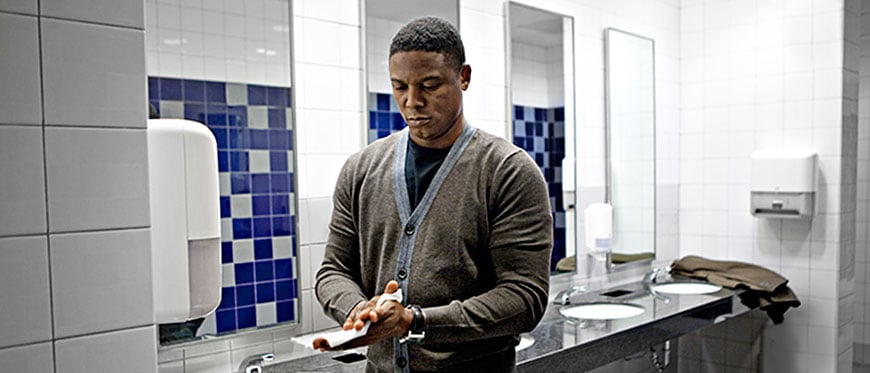In the past, products that thoroughly cleaned and sanitized were often considered effective and not given a lot of extra thought. But today we know better. We know that cleaning products can contain chemicals that are harmful not only to the environment, but to humans. There are more ‘green’ options available than ever before, and you don’t have to sacrifice price or performance to get the job done. To boot, they may have additional benefits over regular cleaning products, such as:
• Minimizing custodial workers’ and building occupants’ exposure to harsh chemicals
• Improving indoor air quality and reducing water pollution
• Reducing costs and labor to dispose of leftovers or packaging that may contain hazardous materials
A clean, green work environment is a happy, healthy work environment. Consider these tips to keep your business sparkling.
Minimize Harmful Cleaning Products
Not all cleaning products are created equal. Avoiding cleaning products that contain chemicals such as phthalates or formaldehyde can make all the difference. According to Green Cleaning Magazine, “recent government reports and non-profit studies have revealed that exposure to chemicals and toxins found in common cleaning products can cause reproductive problems, lung issues and multiple forms of cancer.” As a starting place, look for third party certified green products — those recommended by companies such as Green Seal or EcoLogo.
Communicate Clean
While minimizing these harmful chemicals can assist in creating a healthier and greener workplace, educating staff on how to handle cleaning chemicals will help ensure proper execution. Green Seal suggests: to provide easily understandable directions in appropriate languages, track the quantities of cleaning chemicals used over time, provide directions for the proper rinsing and disposal of empty chemical solution containers and provide employees with on-site, location-specific and annual in-service training. Furthermore, equipping employees with informational materials outlining ways they could reduce their environmental footprint (e.g., reducing clutter in common areas, reporting spills) can help ensure you’re getting your message across.
Less is More
We’ve all heard the phrase “less is more” — and it’s no different when it comes to cleaning, especially if you’re trying to be more mindful of green practices. Consider diluting concentrated cleaning solutions and using only what’s needed to get the job done. Using disposable wipers can help ensure you’re only using as much as is necessary. Furthermore, SFGate notes that it’s not always essential to use a different product for each cleaning task. And finally, when purchasing office or cleaning supplies, explore packaging that is more sustainable — items that use recycled or minimal material.
For more information on how to “green” your purchase of cleaning products, check out the Environmental Protection Agency’s guidelines here.
